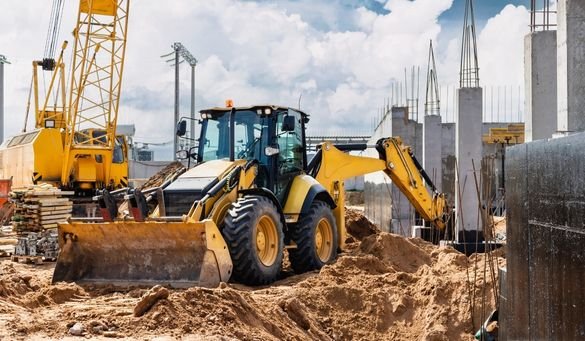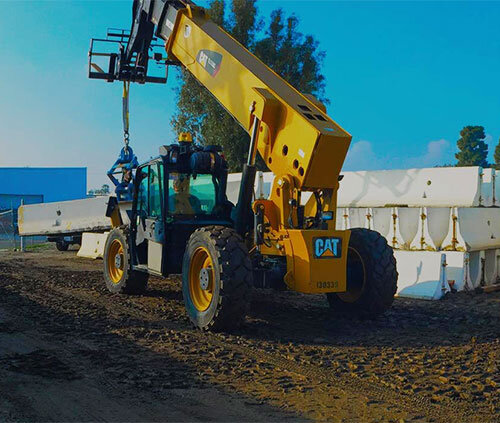Forklift Rental: Heavy Lifting Equipment for Warehousing and Extra
Forklift Rental: Heavy Lifting Equipment for Warehousing and Extra
Blog Article
Maximize Your Spending Plan by Comprehending the Costs Connected With Building And Construction Equipment Leasings
Recognizing the full range of costs connected with building devices leasings is vital for maximizing your budget. What approaches can be used to properly manage these expenses and ensure a much more efficient rental experience?
Overview of Rental Costs
When thinking about building and construction equipment leasings, comprehending the linked costs is paramount for efficient budgeting and project planning. Rental prices can differ substantially based on numerous factors, consisting of devices kind, duration of rental, and location. The initial rental cost often reflects the equipment's market need and its associated functional capacities, influencing the total expenditure.
Along with the base rental rate, supplementary prices might arise, such as transport charges, gas additional charges, and maintenance charges. It is necessary to make up these extra costs to accurately assess the total cost of leasing equipment. The rental duration can affect pricing; longer rentals might qualify for discounted rates, while temporary rentals could sustain higher daily fees.

Breakdown of Rental Prices
A detailed understanding of rental rates is vital for professionals and task managers aiming to maximize their budget plans. Rental rates for building and construction equipment usually contain several elements, consisting of base rates, time-based fees, and use fees.
Base prices are the core costs linked with the leasing of the equipment, typically figured out by the kind and size of the equipment. These rates can differ dramatically, influenced by elements such as equipment need, accessibility, and regional market fads. Time-based costs, which may be daily, weekly, or monthly, serve to fit different task timelines and rental periods.
Additionally, rental rates may consist of use fees, which apply when devices is utilized past a defined limit, ensuring that the rental firm can represent deterioration. Seasonal demand changes can also affect rental rates, with peak building periods normally regulating higher rates.
Furthermore, comprehending the rental firm's plans concerning maintenance and insurance policy can offer additional understanding right into the overall price structure. By assessing these components, specialists can make enlightened choices, making certain the choice of rental devices straightens with both task needs and budget plan restraints.
Additional Fees to Think About
Comprehending the ins and outs of extra costs is important for service providers to handle their general service costs successfully. Past the common rental rates, different auxiliary fees can significantly impact the total expense of equipment rental. These fees typically include shipment and pick-up fees, which can differ based on distance and logistics associated with carrying the tools to and from the work site.
Furthermore, some rental business may impose fuel additional charges if the tools is returned with much less gas than when rented. It is also essential to understand prospective cleansing fees, specifically for customized devices that needs thorough upkeep after usage.

Completely evaluating the rental contract and making clear these additional fees in advance can assist contractors guarantee and stay clear of unanticipated prices that spending plans continue to be intact throughout the job lifecycle.
Upkeep and Repair Service Costs
Regular repair and maintenance costs are often forgotten aspects that can substantially affect the general price of building and construction equipment leasings. When Recommended Site renting equipment, it is critical to think about not just the rental costs but additionally the potential expenses linked with maintaining the equipment in optimal operating problem.
Several rental companies consist of fundamental maintenance as component of the rental contract; nevertheless, extra considerable repair work or unanticipated malfunctions can result in added expenses. It's important to assess the rental agreement meticulously to comprehend what maintenance solutions are covered and what duties fall on the renter.
Additionally, tools that is not well-kept can result in inadequacies on the job site, possibly triggering hold-ups and increasing project costs. To minimize these threats, it is recommended to carry out regular examinations and keep open communication with the rental copyright concerning any type of issues that arise during use.
Insurance Policy and Liability Prices
Insurance coverage and responsibility expenses are crucial components that can considerably affect the total expense of construction devices leasings (rental company near me). These expenses guarantee that both the rental firm and the client are safeguarded from possible economic losses occurring from mishaps, damage, or burglary throughout the rental period

In addition, customers should know any type of deductibles or exclusions in the insurance plan, as these can impact prospective out-of-pocket costs. Comprehending the terms and conditions of any type of insurance protection is crucial to stay clear of unforeseen expenses. Ultimately, budgeting for insurance coverage and responsibility expenditures can aid make certain a smoother rental experience and secure versus monetary threats connected with building jobs.
Conclusion
In final thought, a thorough understanding of the costs connected with building and construction equipment leasings is necessary for reliable budget management. By examining rental prices, added costs, upkeep expenditures, and insurance needs, organizations and individuals can decrease unanticipated expenses. This critical method not only improves cost-effectiveness however likewise makes certain that tasks progress efficiently and effectively. Inevitably, notified decision-making concerning tools services contributes to the general success of building ventures.
Rental costs can differ dramatically based on a number look at here of aspects, including tools kind, duration types of lifts for construction of service, and location (scissor lift rental). The rental duration can influence prices; longer rentals might certify for affordable prices, while temporary leasings could sustain greater day-to-day costs
By performing thorough research study and engaging with credible rental companies, contractors can successfully browse the complexities of rental prices, inevitably maximizing their monetary sources.
Past the basic rental prices, numerous supplemental fees can considerably influence the total cost of tools leasing. Rental companies frequently supply liability insurance that covers injuries to 3rd celebrations or damage to residential or commercial property, while equipment damage insurance coverage can cover the expense of repair services or replacement if the leased equipment is harmed.
Report this page